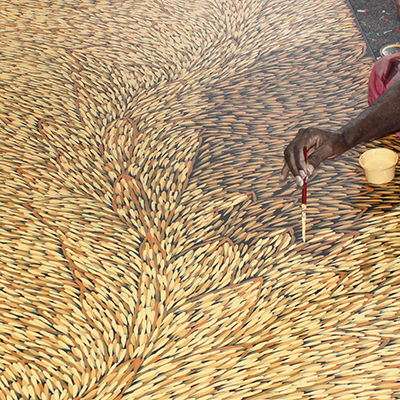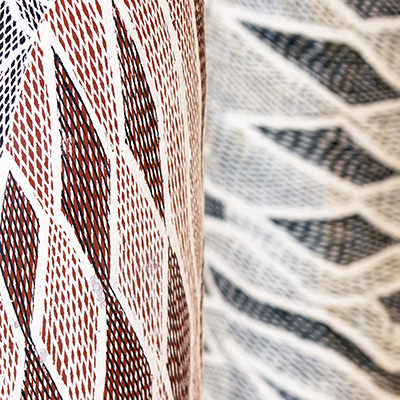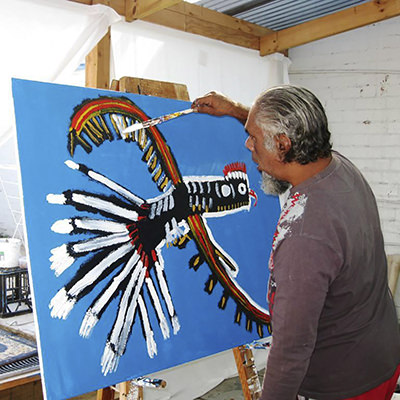Aboriginal Art Styles & Designs
There are many styles of Australian Aboriginal Art - and the diversity makes the genre both exciting and constantly self renewing.
Click through to learn more about some of the most famous contemporary Indigenous Australian Art Styles. And read on to discover the origins of Aboriginal designs that have made the art movement celebrated around the world.
Origins | Designs in New Mediums | Developments in Different Styles
Made famous by Gloria Petyarre's winning artwork in the coveted Art Gallery of New South Wales 'Wynne Prize' for landscape 1999...
A style common in Northern Australia and known also as Rarrk paintings. These works are believed to hold great spirit and power through the crossing of fine lines...
Varying from the finest of dot work to the most wild and vigorous, colourful dots. These works exemplify Aboriginal Art in most people's minds...
Emily Kame Kngwarreye astounded the contemporary art world with her powerful colour compositions, derived from pushing the paint laden brush into the canvas...
In the Aboriginal Art world, genius Kudditji Kngwarreye is master of this technique. Without knowing, he echoes the works of Mark Rothko, but with a decidedly more vigorous style...
The works of this style possess a raw creativity, characterised by a seemingly simplistic approach that is uninhibited and intuitive to composition and ideas...
Aboriginal Designs: Origins
With no written language, Indigenous Australian cultures used art as a form of communication to hand down traditions for over 60,000 years. They developed highly sophisticated visual languages using symbols and designs.
Australian Aboriginal art is one of the oldest living artforms. Mediums such as message sticks, rock art, sand paintings, body painting, and carvings were traditionally used to communicate important messages.
Ancient symbols and designs continue to be used in ceremonies and as a teaching tool in everyday life. Just like Aboriginal culture, Aboriginal art is organic, constantly evolving and adapting to the 21st century.
Stories and designs may be tens of thousands of years old, but the custodians of these Dreamings are using new mediums and interpreting them their own way. It brings a vibrancy and freshness to the telling.
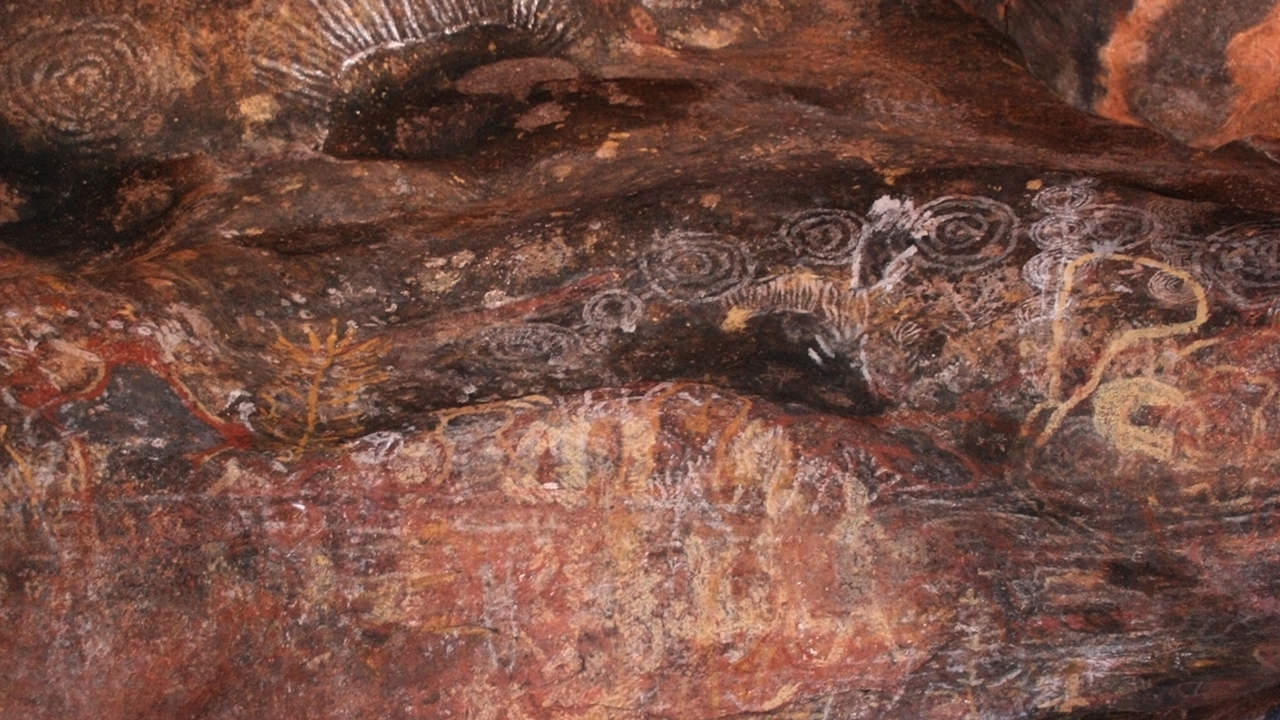
Mapping Country in a New Medium
The paintings produced by artists from the western and central deserts of Australia are often referred to as ‘maps of Country’. The source of their designs is the traditional sand paintings created on ceremonial grounds.
The sand paintings were drawn in the sand by Elders to instruct initiates about the Dreamings in preparation for the ceremonies. Key sites, travelling routes and Dreamtime legends were all outlined with symbols.
When artists from Papunya were given the opportunity to paint with acrylic and canvas in the 1970s, they depicted elaborate layouts of ceremonial grounds. The paths of the dancers were indicated by the tracks of the ancestor figures they represented.
Today, Indigenous Australian artists use these designs in their artworks to pass down traditional knowledge and practices within a family. It is quite common to see children and young adults observing Elders painting, so they too can learn this important cultural information.
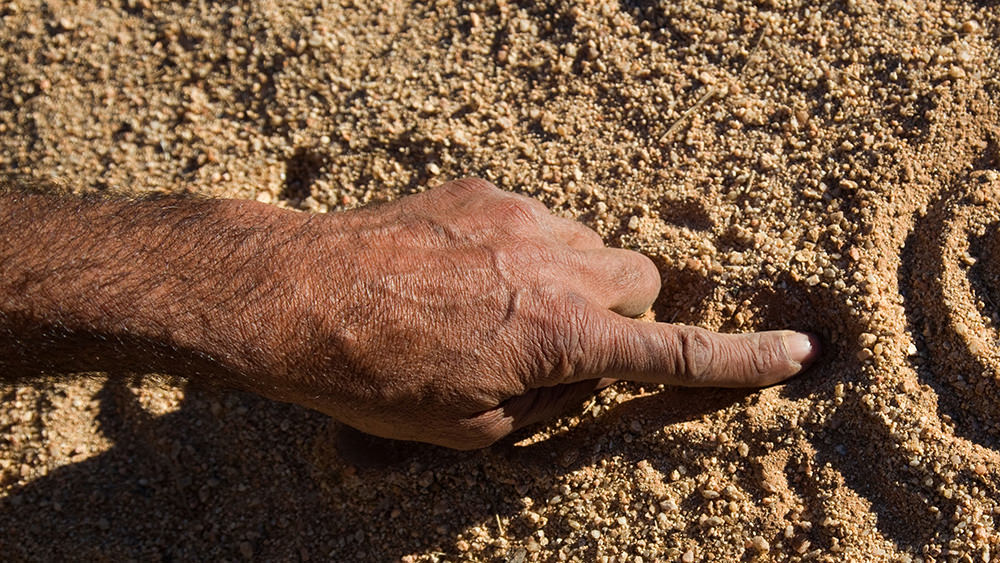
Developments in Different Regions
The developments occurring in Papunya sparked great interest. And the contemporary Aboriginal art movement went on and spread to communities of Aboriginal peoples around Australia.
While western desert art maintained a strong emphasis on traditional designs and dot painting, other communities sought to evolve their approach. They moved away from the use of symbols and narratives to tell stories.
Even through the desert regions, the tight dot painting that was typical of the Papunya Tula works evolved. Dots were applied very loosely and were joined up by moving a brush across the canvas. Artists took the existing structured style and redesigned it, moving the art movement in a new direction.
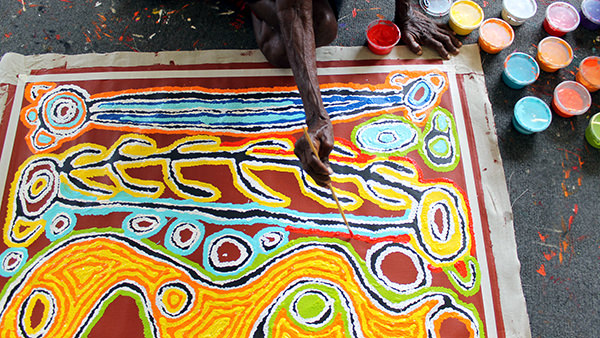
Over in the community of Yuendumu, artists from Warlukurlangu art centre maintained the use of very traditional iconography. However, the dotting that surrounded the outlines was less important. Artists developed individual approaches and experimented with the kaleidoscope of colours acrylic paint offered.
In Utopia, artists learnt the art of batik before transferring their designs to canvas. Batik is a method of decorating textiles by applying designs in hot wax to the fabric followed by dyes.
The batik process gave the artists of Utopia a great proficiency in building up layers of pattern and evoking a beautiful sense of movement in their canvases. From the beginning their works incorporated designs of the local flora and fauna such as local leaves, flowers, seeds and grasses.
These motifs could be translated easily with melted wax. They also translated well to the painting medium, as well as stories with strong ceremonial associations, such as Awelye.
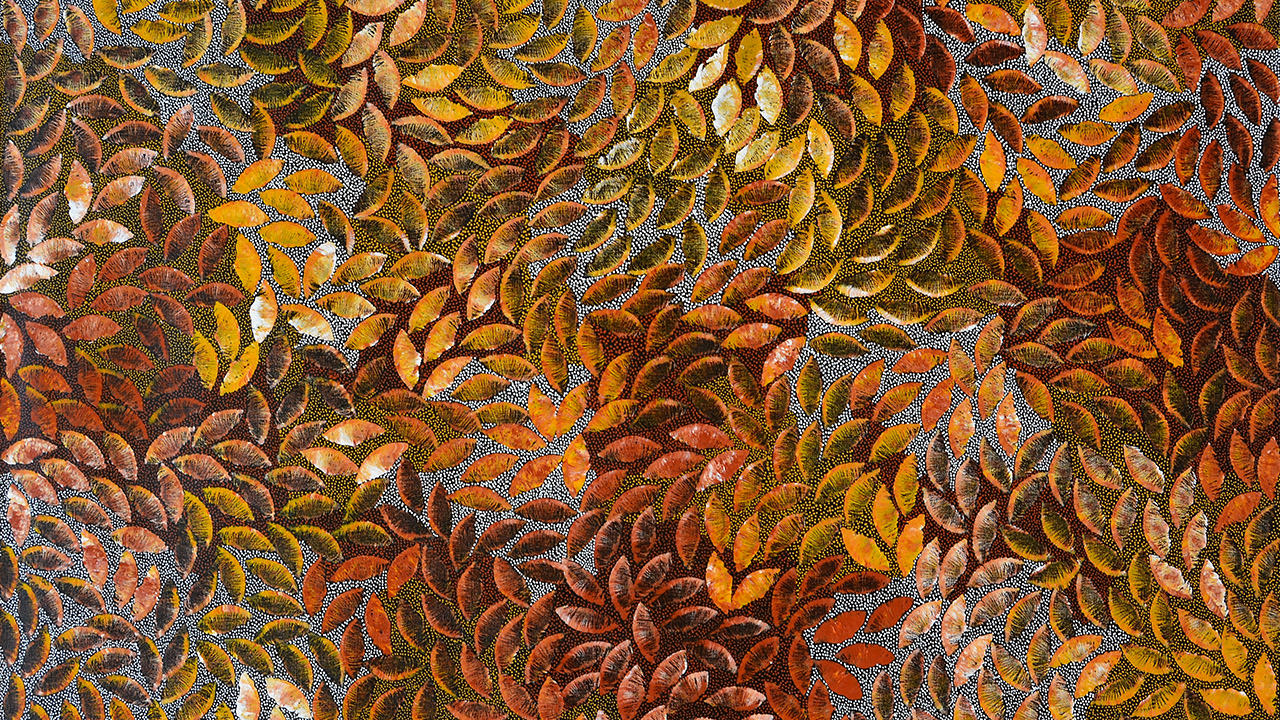
The Lockhart River Art movement is a distinctly 21st century approach to cultural expression, created by a new generation of artists. Without the same responsibility of inherited iconography, the young artists known as ‘The Art Gang’ had the freedom to learn cultural traditions while also learning their craft.
Their art was in a constant state of transformation; they were taking the old ways and transforming them into new ways. As a result the Lockhart River Artists have a wonderful diversity of styles that convey the essence of their Country.
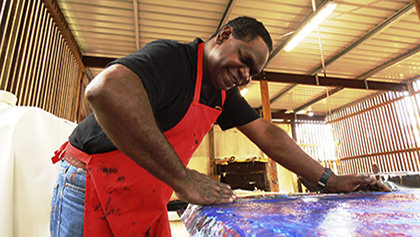
An interesting practice that features in a number of artists works is to paint with their fingers. This is an adaption of the way that Elders would pull their fingers through the sand while passing on knowledge to the younger generation.
Regions really do have their own identifiable style. Sometimes it’s obvious. Other times, it’s in the designs and iconography they use. An obvious example is art from Arnhem Land where cross hatching is used rather than dotting. Another example is from the Kimberley region, where many artists depict the great Wandjina spirit that was originally displayed in rock paintings.
Clan Designs from Arnhem Land
The art of Arnhem Land uses sophisticated designs to signify a person’s identity. The clan designs painted on larrakitj memorial poles mark the ancestral identity of people and place. You could almost say it is like the artist’s ‘signature’.
A person’s identity is closely linked to the designs that they use. These patterns made of fine lines drawn in specific ochre colours can represent elements such as fire and water. And when combined with certain totemic animal designs, all signify which clan the owner belongs to.
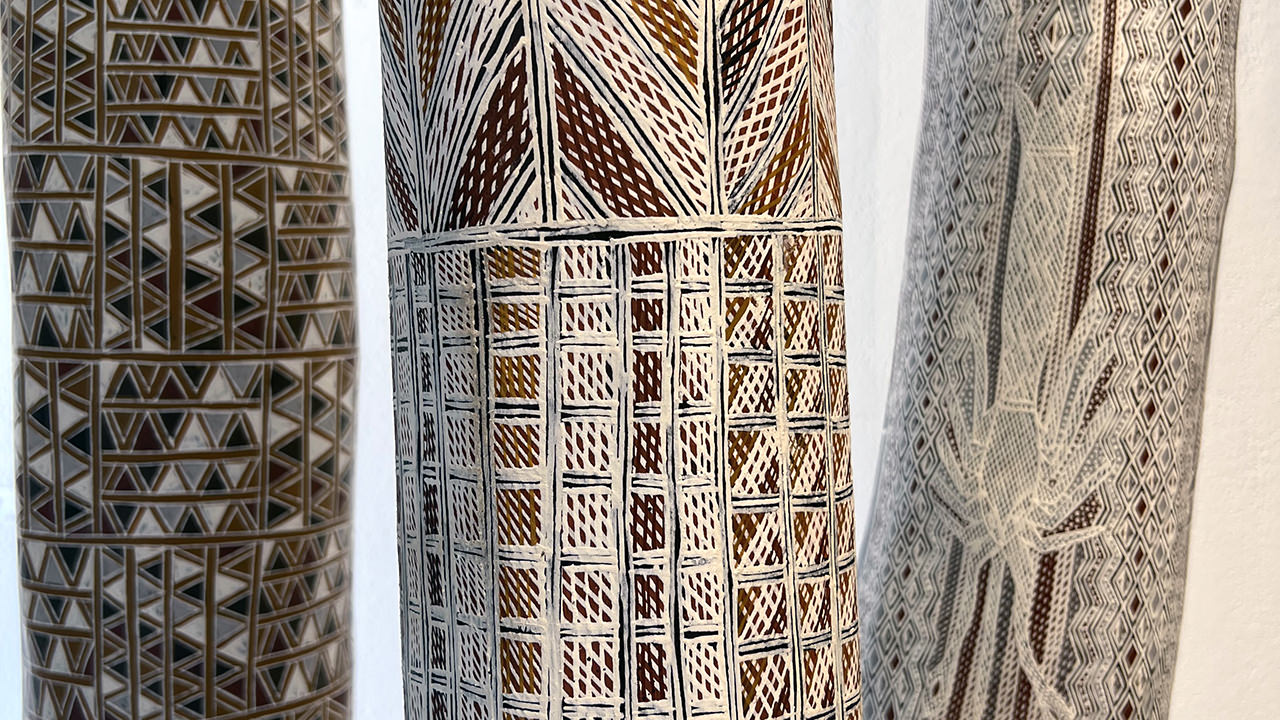
Sculptures
Sculpture and carvings have formed part of Australia's Frist Nation’s cultural expression for millennia. There is a wonderfully diverse range of styles, materials and techniques used by artists today.
Many contemporary Australian Indigenous artists continue to work in traditional sculptural art forms. Others have developed a distinctive style from a combination of traditional and contemporary Aboriginal designs. Modern materials and techniques are utilized to produce works that are fresh interpretations of culture and Country.


